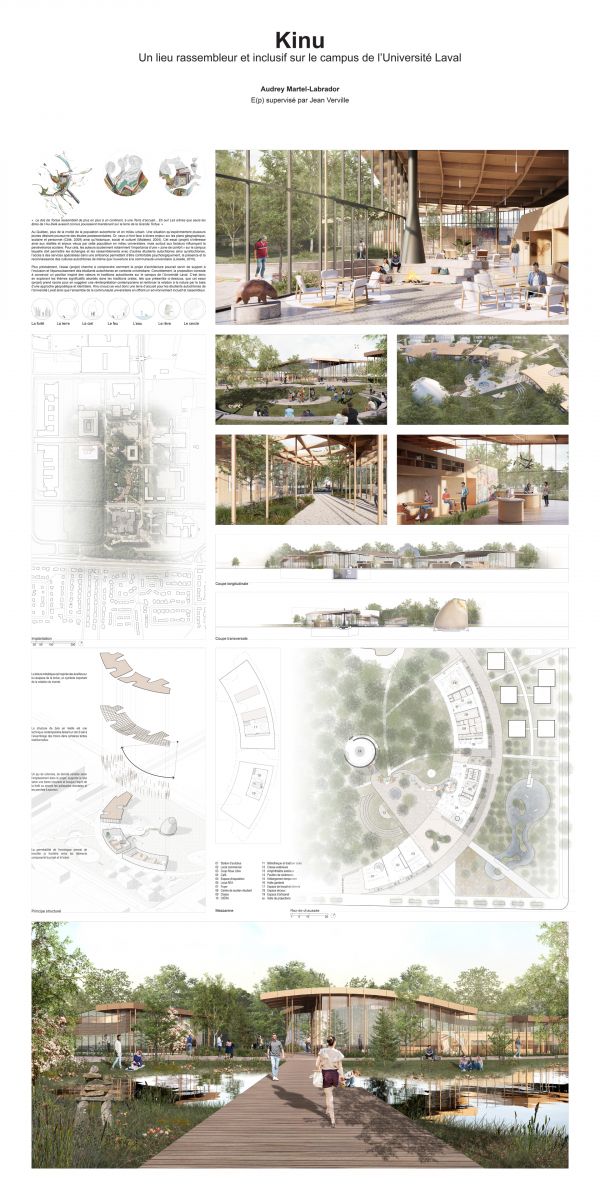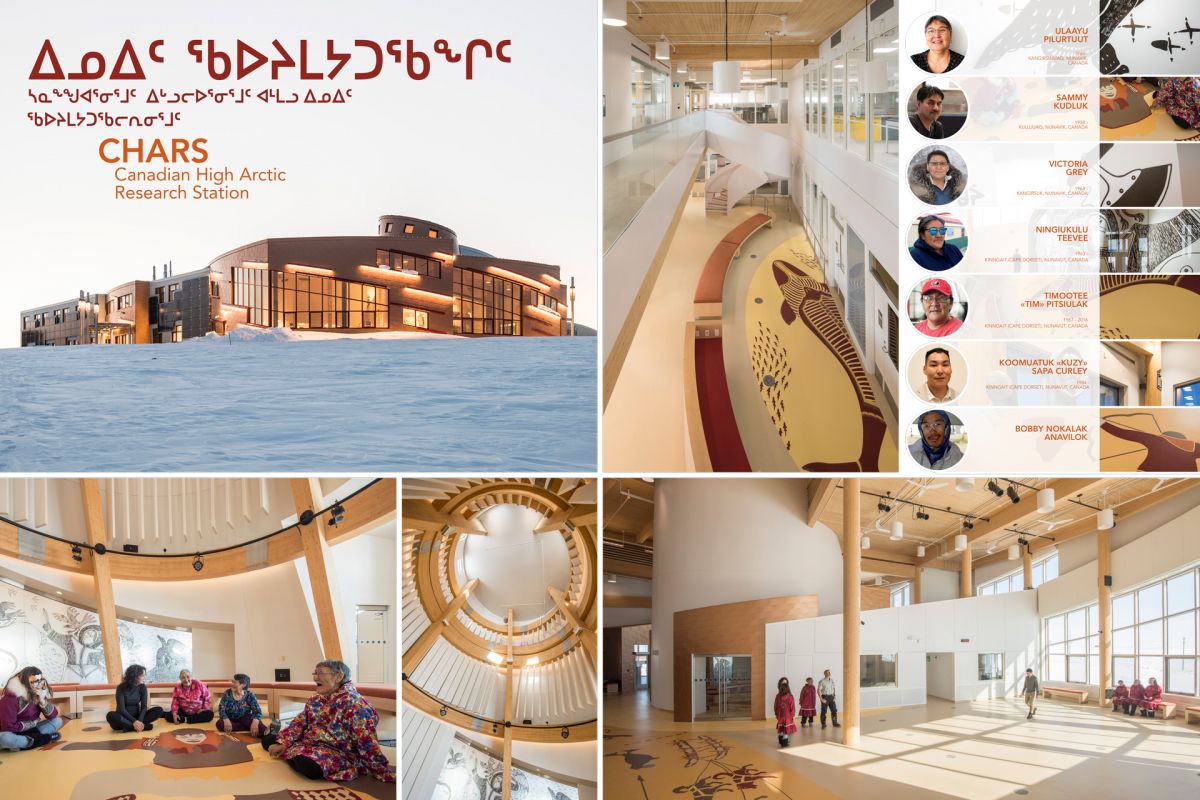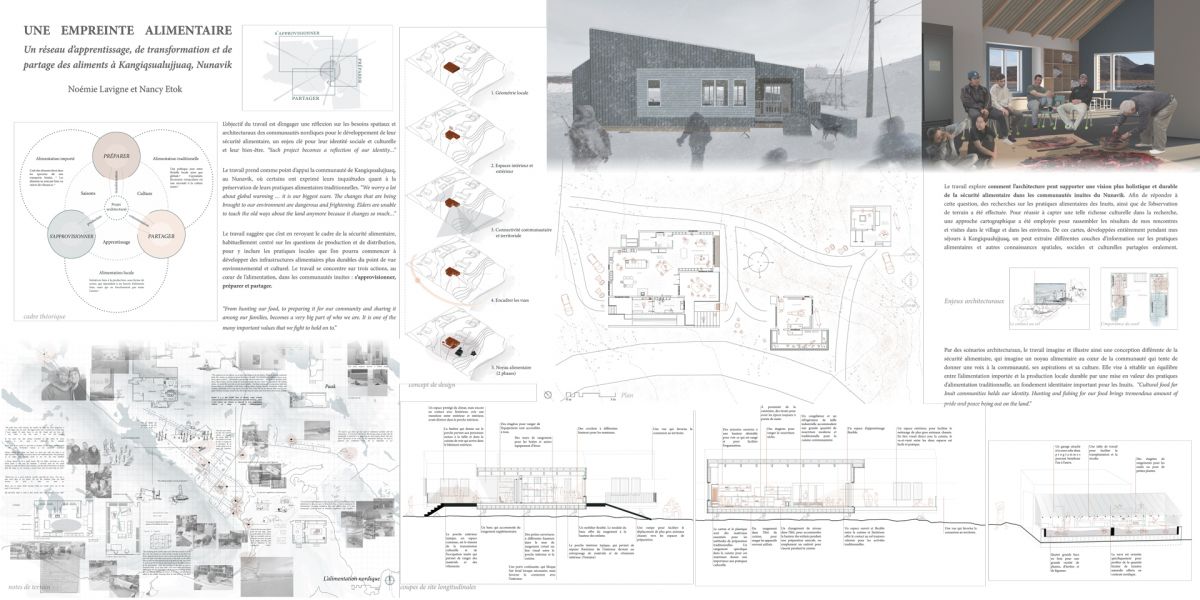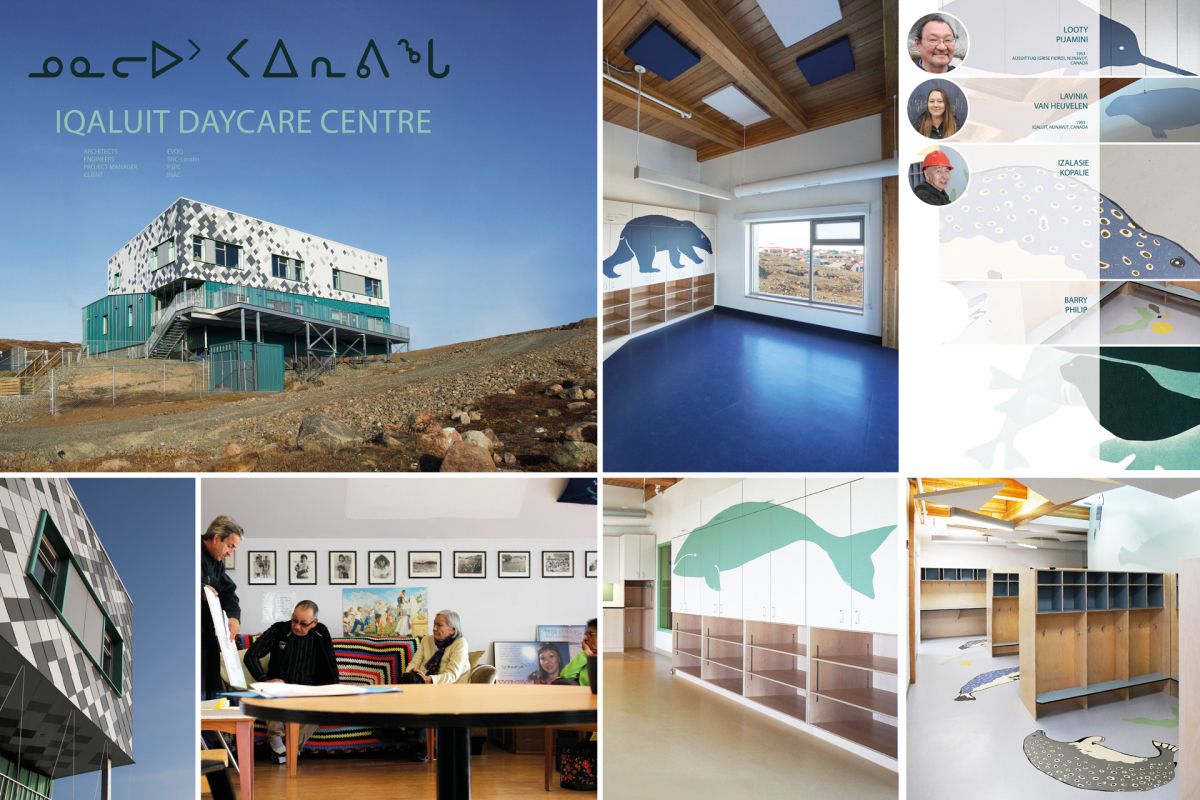RAIC 2021 International Indigenous Architecture and Design Symposium
Kinu: lieu inclusif et rassembleur sur le campus universitaire
Making Room for New Indigenous Voices on the Leading Edge of Architecture Practice

Au Québec, plus de la moitié de la population autochtone vit en milieu urbain. Une situation qui concerne plusieurs jeunes autochtones désirant poursuivre des études postsecondaires. Cette thèse s’intéresse ainsi aux réalités de cette population et aux enjeux auxquels elle est confrontée en milieu universitaire, mais surtout aux facteurs influençant la persévérance scolaire. En effet, les auteurs soulèvent notamment l’importance d’une « zone de confort » sur le campus, laquelle doit permettre les échanges et les rassemblements avec d’autres étudiants autochtones et allochtones, l’accès à des services spécialisés dans une ambiance permettant d’être confortable psychologiquement, la présence et la reconnaissance des cultures autochtones de même que l’ouverture à la communauté universitaire.
Plus précisément, cette thèse cherche à comprendre comment le projet d’architecture pourrait servir de support à l’inclusion et à l’épanouissement des étudiants autochtones en contexte universitaire. Concrètement, la proposition consiste à concevoir un pavillon inspiré des valeurs et traditions autochtones sur le campus de l’Université Laval. C’est donc en explorant les thèmes significatifs abordés dans les traditions orales que ce projet prend racine pour en suggérer une réinterprétation contemporaine. Kinu (nous) se veut donc une terre d’accueil pour les étudiants autochtones de l’Université Laval et pour l’ensemble de la communauté universitaire en offrant un environnement inclusif et rassembleur.
Audrey Labrador-Martel, Maitrise en architecture (M. Arch), Stagiaire en architecture, Groupe A / Annexe U, Partenariat de recherche Habiter le Nord Québécois
Diplômée à la maîtrise en architecture de l’École d’architecture de l’Université Laval en 2020, Audrey Martel-Labrador y développe sa passion pour l’architecture. Une passion qu’elle a eu la chance de nourrir par sa nature curieuse et ses nombreux voyages. Ces expériences ont éveillé chez elle une sensibilité particulière pour la conception de milieux de vie à échelle humaine et culturellement appropriés.
Inuit Qaujimajatuqangit; art, architecture and Traditional Knowledge
Collaborations: Indigenous / Non-Indigenous Co-Design and Building with First Nations, Metis and Inuit Communities

Recently an increasing number of Indigenous communities have decided to take charge of their built environment. They are now insisting that their built environments speak of and reflect their cultures. The communities have realized that they can and must demand this. However, this means that they have to learn how to participate in the creative process that leads to the development of their built environments. They must become aware of how to work with their architectural partners and especially how important and significant their input is in the design process. Following a unique request by Ikaluktutiak (Cambridge Bay) residents, Inuit Qaujimajatuqangit (IQ-“what has always been known by the Inuit”) was applied to the design of the Canadian High Arctic Research Station (CHARS) in their community. This has been a ground-breaking endeavor for both the Nunavummiut and the Architects. The Inuit took on the responsibility, with the Architects, in shaping their built environment. Key IQ concepts and values were brought to bear on the design process; environmental stewardship, collaborative relationship, problem solving resourcefulness, skills and knowledge acquisition. This holistic approach led to unexpected expressions of identity, buy-in and pride. Breaking away from the colonial paradigm, the Nunavummiut take charge of stating and expressing their culture and identity through their built environment. With the support of their own body of knowledge they and the Architects project their identity into the contemporary world. From the Inuit community members’ perspective, this is a very enlightening and hands-on learning experience. From the Architects’ perspective this is an equally very enlightening and hands-on learning experience. The co-creation exercise is an ideal forum to initiate real dialogue. It is truth and reconciliation not just in words but in action, trying to make a difference by learning to work together.
Kirt Ejesiak, MPA, CAS, Creative Director and CEO of Uqsiq Communications, Founder and President of Panaq Design
Kirt Ejesiak is Founder and President of Panaq Design, a consultant group offering construction related professional services in Nunavut since 1997. He has extensive experience in relations and communications in the north, working with Inuit Organisations. He has worked for Pauktuutit and served as President of the Inuit Non-Profit Housing Board in Ottawa. Kirt Ejesiak is currently living in Iqaluit where he is also Creative Director and CEO of Uqsiq Communications.
Une empreinte alimentaire: un réseau d’apprentissage, de transformation et de partage des aliments à Kangisualujjuaq, Nunavik
Collaborations: Indigenous / Non-Indigenous Co-Design and Building with First Nations, Metis and Inuit Communities

L’objectif de cette thèse est d’engager une réflexion sur les besoins spatiaux et architecturaux des communautés nordiques pour le développement de leur sécurité alimentaire, un enjeu clé pour leur identité sociale et culturelle et leur bien-être. Le travail prend comme point d’appui la communauté de Kangiqsualujjuaq, qui se trouve en bordure de la rivière George, au Nunavik, où certains Kangiqsualujjuamiut ont exprimé leurs inquiétudes quant à la préservation de leurs pratiques alimentaires traditionnelles. La thèse explore ainsi comment l’architecture peut supporter une vision plus holistique et durable de la sécurité alimentaire dans les communautés inuites du Nunavik. Afin de répondre à cette question, des recherches sur les pratiques alimentaires des Inuits, ainsi que de l’observation de terrain ont été effectuées. La thèse suggère que c’est en revoyant le cadre de la sécurité alimentaire, habituellement centré sur les questions de production et de distribution, pour y inclure les pratiques locales que l’on pourra commencer à développer des infrastructures alimentaires plus durables du point de vue environnemental et culturel. Ainsi, la thèse se concentre sur trois actions qui sont au cœur de l’alimentation dans les communautés inuites : l’approvisionnement, la préparation et le partage. Par des scénarios architecturaux, la thèse imagine et illustre ainsi une conception différente de la sécurité alimentaire, qui tente de donner une voix à la communauté et d’exprimer ses aspirations et sa culture. Elle vise à rétablir un équilibre entre l’alimentation importée et la production locale durable par une mise en valeur des pratiques d’alimentation traditionnelle, un fondement identitaire important pour les Inuits.
Noémie Lavigne, Maîtrise en architecture, Graduée en architecture, Université Laurentienne
Nancy Etok, Vice-principal of Ulluriaq School in Kangiqsualujjuaq
Noémie Lavigne a eu la chance de se joindre comme assistante d’atelier pour un voyage à Kangiqsualujjuaq, au Nunavik. Un voyage inoubliable dans une communauté chaleureuse qui possède une connexion robuste à son alimentation traditionnelle. Ce voyage l’a amenée à développer une thèse sur la sécurité alimentaire avec cette communauté.
The Iqaluit Daycare: Harvesting the sea
Collaborations: Indigenous / Non-Indigenous Co-Design and Building with First Nations, Metis and Inuit Communities

Recently, an increasing number of Indigenous communities have decided to take charge of their built environment. They are now insisting that their built environments speak of and reflect their cultures. The communities have realized that they can and must demand this. However, this means that they have to learn how to participate in the creative process that leads to the development of their built environments. They must become aware of how to work with their architectural partners and especially how important and significant their input is in the design process. EVOQ was mandated by Public Services and Procurement Canada and Indigenous and Northern Affairs Canada to design a new daycare in Iqaluit. The Iqaluit Community Daycare is now the largest daycare facility in Nunavut. It can accommodate 60 children and integrates a number of artworks created by artists from the community. Through public consultations held in Iqaluit in September 2017 with different age groups, the vision ‘’Harvesting the sea’’ emerged from discussions with the local population. Inspired by the city’s geography, its relationship to the ocean and the community’s continued connection to fishing and hunting sea mammals, this vision became a request by the Iqalummiut. Symbolic of the opportunity for the community to use the future building for sharing traditions and transmitting Inuit values to new generations, this promising vision inspired the design of the entire building. While the exterior’s shape and texture of the daycare evokes a ringed seal emerging from arctic waters, references to Harvesting the sea are also reflected in the interior through the integration of works of art. The process of integrating artwork into architecture has allowed showcasing local talent, also producing a unique opportunity for collaboration between artists from diverse backgrounds. Created from original works by Inuit artists obtained following a competition, silhouettes of suspended coloured seals dress the main hall while a fresco on the floor and on the wall of this central space exhibits marine fauna (algae, molluscs, rocks, fish, seals, and walrus). Finally, a coloured silhouette of an Arctic animal distinguishes each of the playrooms, creating a visual identity for the children and playfully illustrating the age group they belong to in the daycare.
Kirt Ejesiak, MPA, CAS, Creative Director and CEO of Uqsiq Communications, Founder and President of Panaq Design
Kirt Ejesiak is Founder and President of Panaq Design, a consultant group offering construction related professional services in Nunavut since 1997. He has extensive experience in relations and communications in the north, working with Inuit Organisations. He has worked for Pauktuutit and served as President of the Inuit Non-Profit Housing Board in Ottawa. Kirt Ejesiak is currently living in Iqaluit where he is also Creative Director and CEO of Uqsiq Communications.



